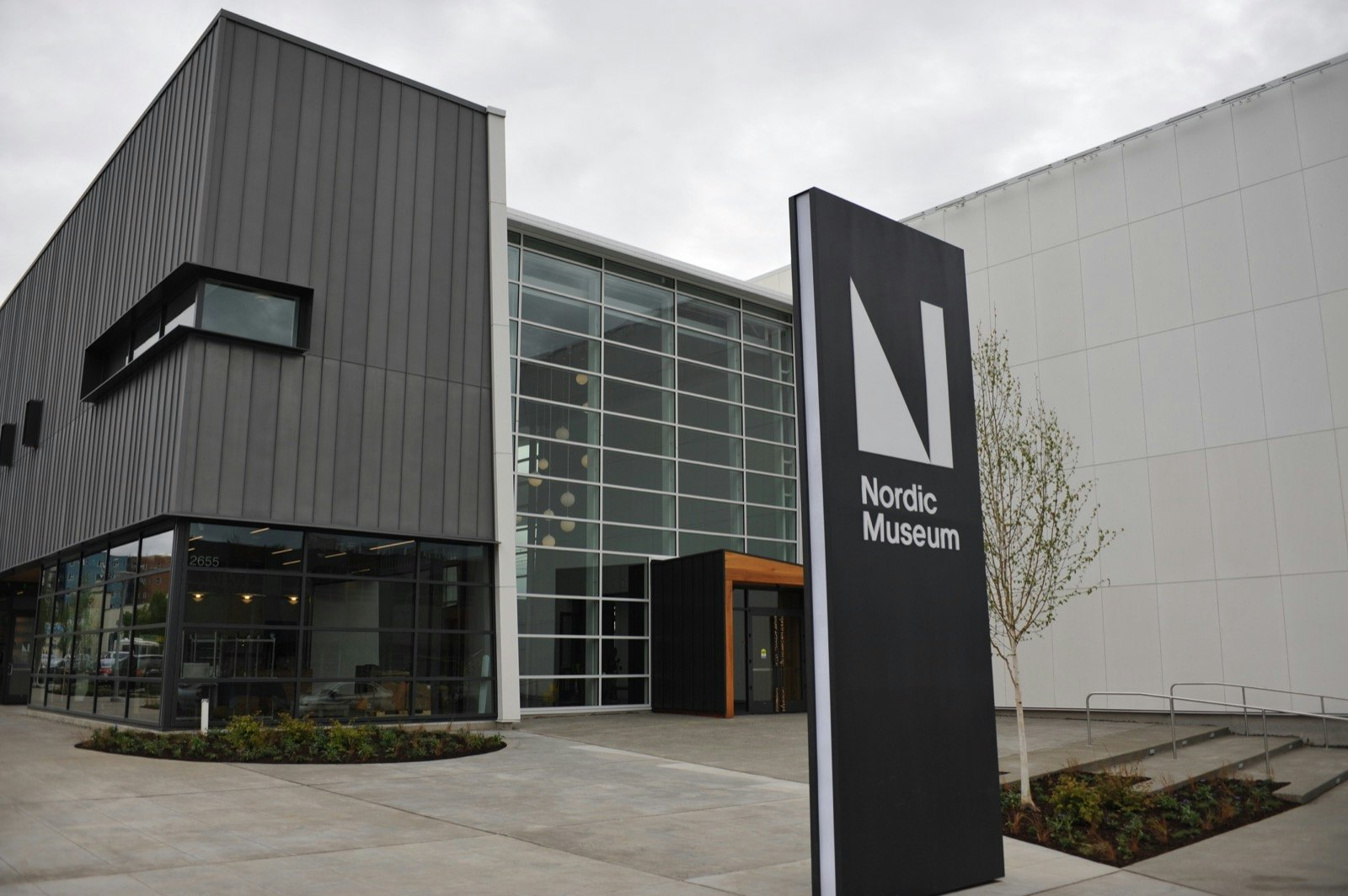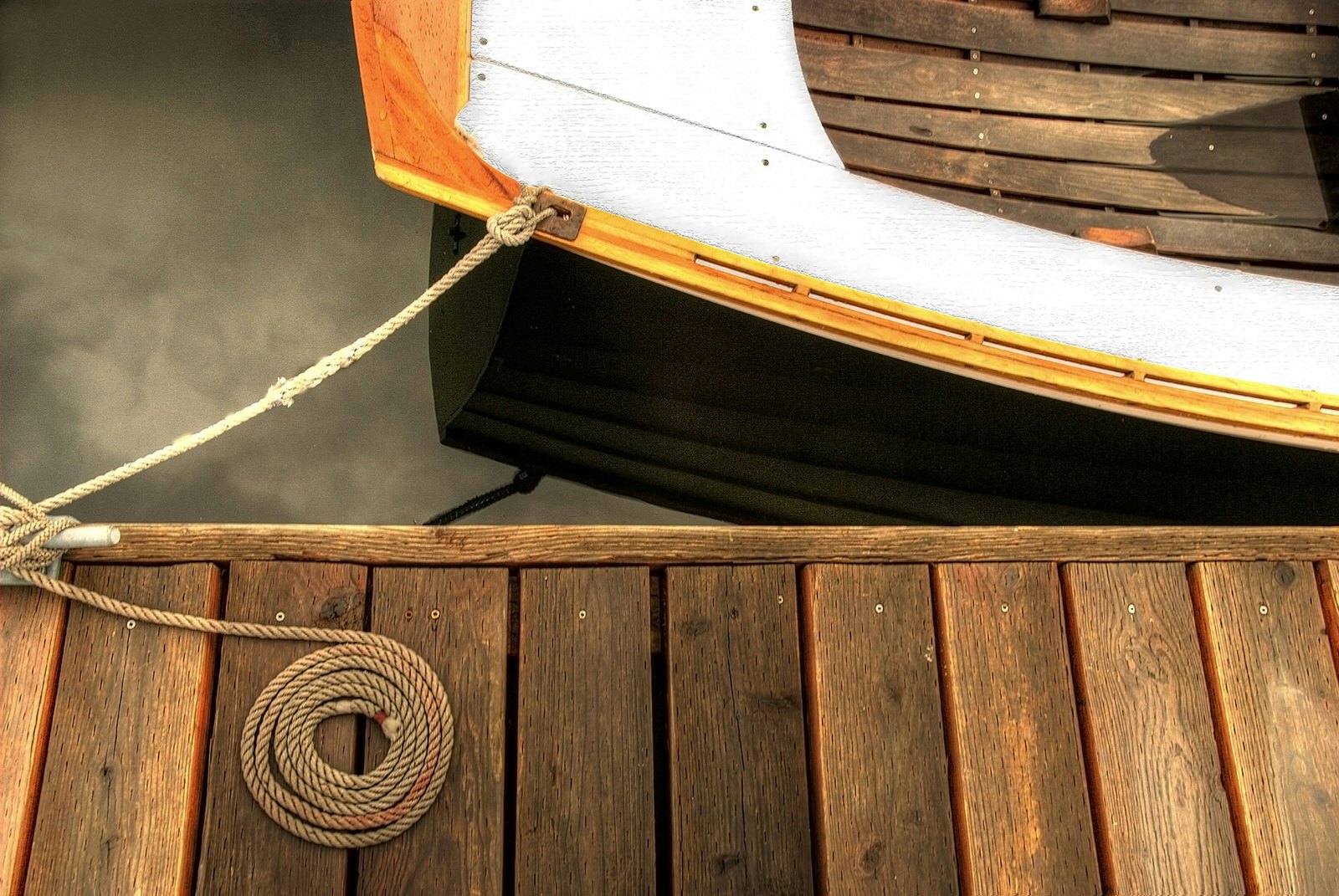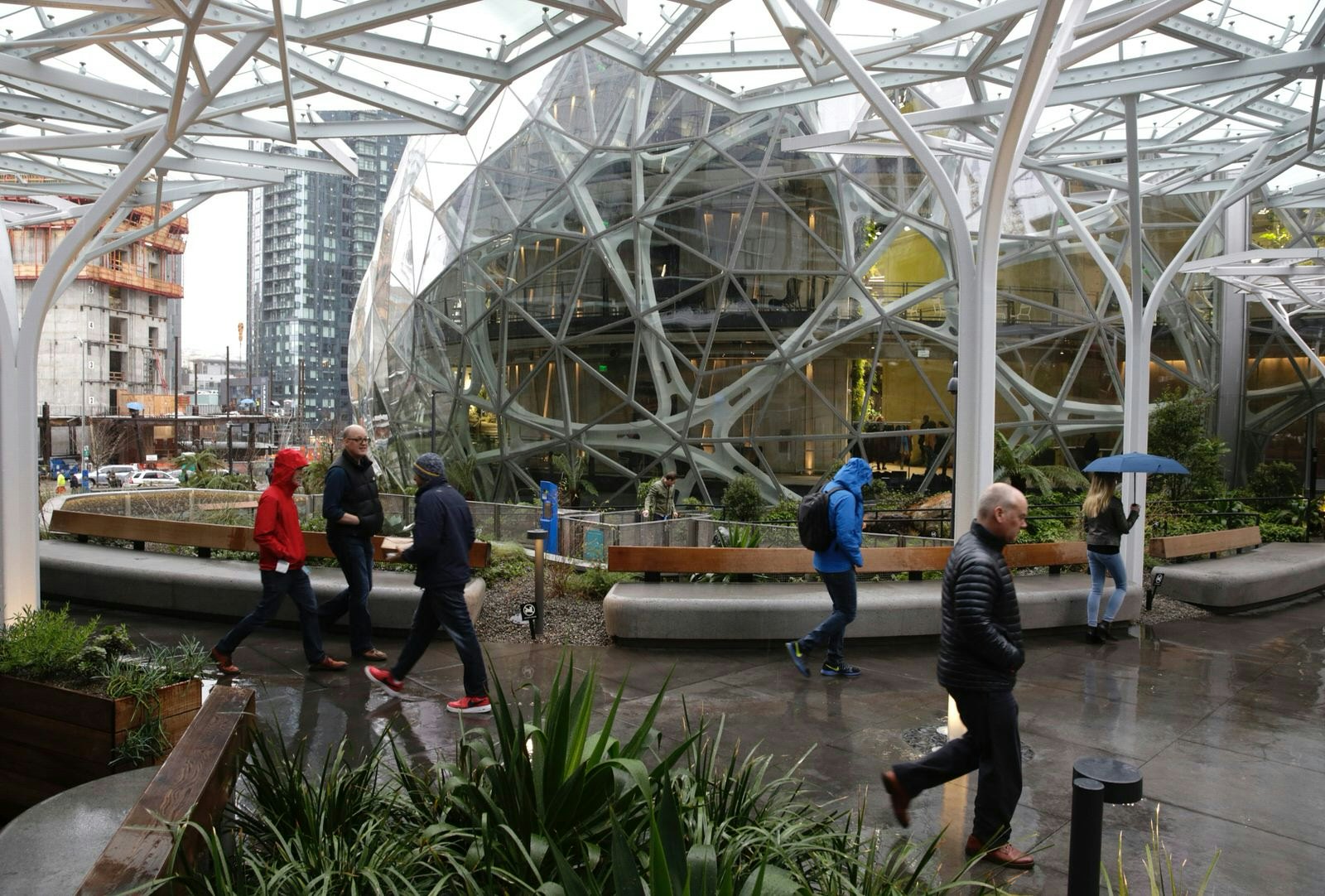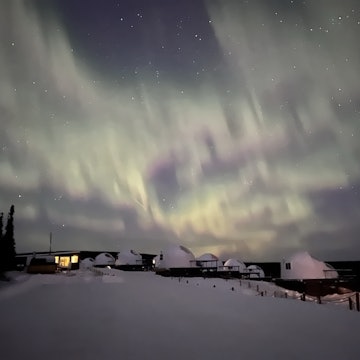

Amazon opened its new Seattle office space, which looks more like a rainforest, in January 2018 © Jason Redmond/AFP/Getty Images
Seattle is an ever-evolving city. While the paint’s still drying on one idea, someone somewhere is beginning another project.
If you last came here six months ago, chances are you’re already out of date. Here are a few new adaptations promising to grab visitors’ attention in 2019.

Seattle landmark aims for the stars
The Space Needle is to Seattle what the Eiffel Tower is to Paris: a cherished and instantly recognizable city landmark. Having celebrated its 50th birthday in 2012, the aging structure was long overdue a refurb.
Patch-ups have been administered in the past. In 1982, an extra ‘skyline’ level was added to the upper reaches and, in 2000, $20 million was spent on a new restaurant plus retail space at the base.
The most recent botox job, undertaken between 2017 and 2018, cost a cool $100 million and was on a much grander scale. Dubbed the ‘spacelift’, it has refitted the observation deck with tilted floor-to-ceiling windows. Equipped with innovative glass benches called ‘skyrisers’, visitors can sit and take selfies that make them appear as if they’re floating in mid-air. Just below the main observation deck another addition, the ‘Loupe’ has unveiled the world’s only rotating glass floor using plans originally conceived in the 1960s.
Amazingly, the Needle stayed partially open during its year-long renovation with most of the work completed by August 2018.

Nordic Museum keeps Viking spirit
Nordic pioneers were instrumental in the early success of Seattle. From 1980 to 2017, their history was modestly displayed in the little-heralded Nordic Heritage Museum on a leafy residential street in Ballard, but in May 2018, their Nordic descendants rekindled the Viking spirit and relocated to an attention-grabbing purpose-built campus in the center of Ballard.
Renamed the Nordic Museum (dropping the word ‘heritage’ to reflect the ongoing nature of its exhibits), the new campus celebrates the history and western migration of people from the five nations of Denmark, Finland, Iceland Norway and Sweden. Its encyclopedic permanent collection is displayed in a beautiful Scandinavian-minimalist exhibition space designed to replicate an indoor ‘fjord’ crossed by several high-level ‘bridges’.
Look carefully and you’ll notice dozens of subtler Nordic touches both in and outside the building, from the Danish carpets to the Finnish elevators.
The museum also doubles as a cultural center with an auditorium, classrooms and a café. Well-crafted temporary exhibitions offer ample excuses for return visits. A highlight of Fall 2018 is a collection of Viking artifacts on loan from Sweden’s Uppsala University.

Center for Wooden Boats stretches its sails
Quietly anchored on the south shore of Lake Union since the late-1970s, the Center for Wooden Boats (CWB) has long been one of Seattle’s most revered local institutions. Indeed, as the surrounding cityscape has morphed from industrial wasteland into hi-tech urban village, the CWB’s eclectic collection of bobbing boats and wooden jetties has remained practically unaltered – until now.
In Fall 2018, the CWB is due to open a new exhibition space in Lake Union Park within shouting distance of their waterside dock. Named the Wagner Education Center in honor of CWB founder Dick Wagner who passed away last year, the handsome cedar-sided building will serve as a classroom, field trip venue and museum equipped with 15 hanging boats.
In the spirit of the old center, entry will be free and the CWB will continue to offer its popular free sailing excursions from the adjacent dock on Sunday mornings.

Amazon Spheres shows the future
The world’s largest online retailer has dramatically altered the skyline of Seattle over the last decade, most recently shifting its focus from the chameleonic South Lake Union neighborhood to the more central Denny Triangle.
This once low-rise strip of cheap hotels and ugly parking lots has been gradually repopulated with sleek office towers and trendy restaurants. However, the most eye-luring addition to the cool (if controversial) Amazon campus is the ‘Spheres’, three unique steel and glass orbs where an army of tech workers share office space with over 40,000 plants including a 55-foot-tall fig tree.
While not technically accessible to non-employees, the spheres are equipped with an onsite visitor center called the Understory explaining the details of their conception and construction.
The giant orbs sit next to the 37-story ‘Day One’ tower, home to Amazon Go, the company’s first checkout-free grocery store, which opened to the public in January 2018.

Pike Place goes on and on
Long considered the soul of Seattle, 111-year-old Pike Place market is a rambunctious alliance of lippy fish-throwers, creative punk buskers and other offbeat elements of urban street life. The market has never strayed too far from its roots, but even an old dog can learn new tricks.
In June 2017, Pike Place opened MarketFront, its first proper extension in more than 40 years. Integrated cleverly into the historic market structure so it’s almost impossible to notice the join marks, the add-ons include a spacious vendors hall, low-cost housing units and a series of waterfront terraces that will ultimately link the stalls with Seattle’s revamped waterfront.
As well as providing covered space for more than 45 new indie vendors, MarketFront hosts a brightly-lit Producers Hall shared by three culinary micro-businesses: a chocolate factory, a microbrewery and a biscuit-maker.

SoDo Track paints the town
Weird street art is a Seattle hallmark – look no further than Fremont’s concrete troll, or Georgetown’s ‘Hat ‘n’ Boots’ – but no community art project can match the scope of the ongoing SoDo Track. It has taken a three-year mission to add glitz to an elongated stretch of the once humdrum warehouse district of SoDo with lurid murals.
Over a three-year period, up to 60 artists have lent their creativity to a clutch of buildings in the area; 50 percent of them regional, the rest drawn from a potpourri of places as far apart as Hong Kong and Israel. The most recent additions to the giant canvas were painted in July 2018, when 20 artists picked up their brushes and spray-cans and filled in the remaining gaps working to a loose brief entitled ‘motion, movement and progression’.
The best of the street can be seen from the 150 or 594 bus routes or the light rail line south of Stadium station.

Alaska Viaduct Replacement Tunnel finally moves along
Locals often give a weary eye-roll at the mention of the Alaskan Way Viaduct Replacement Tunnel, a much-delayed building project that will beautify the city’s waterfront by replacing an ugly 70-year-old expressway with a tunnel.
Originally slated to open in 2016, the tunnel has been pushed back three years due to problems with the giant Japanese-made boring machine named ‘Bertha’. But the boring is now complete, and the tunnel is touted to open to traffic in late 2018, assuming there are no last-minute hitches. After that the viaduct will be dismantled and the waterfront will be transformed from concrete jungle to leafy urban park.
Keeping a vibrant city fresh while retaining all its quirks and idiosyncrasies is no small task. But these seven projects will make you take another look at a gem of the pacific northwest.
https://shop.lonelyplanet.com/products/lonely-planets-best-in-travel-paperback-2019
















